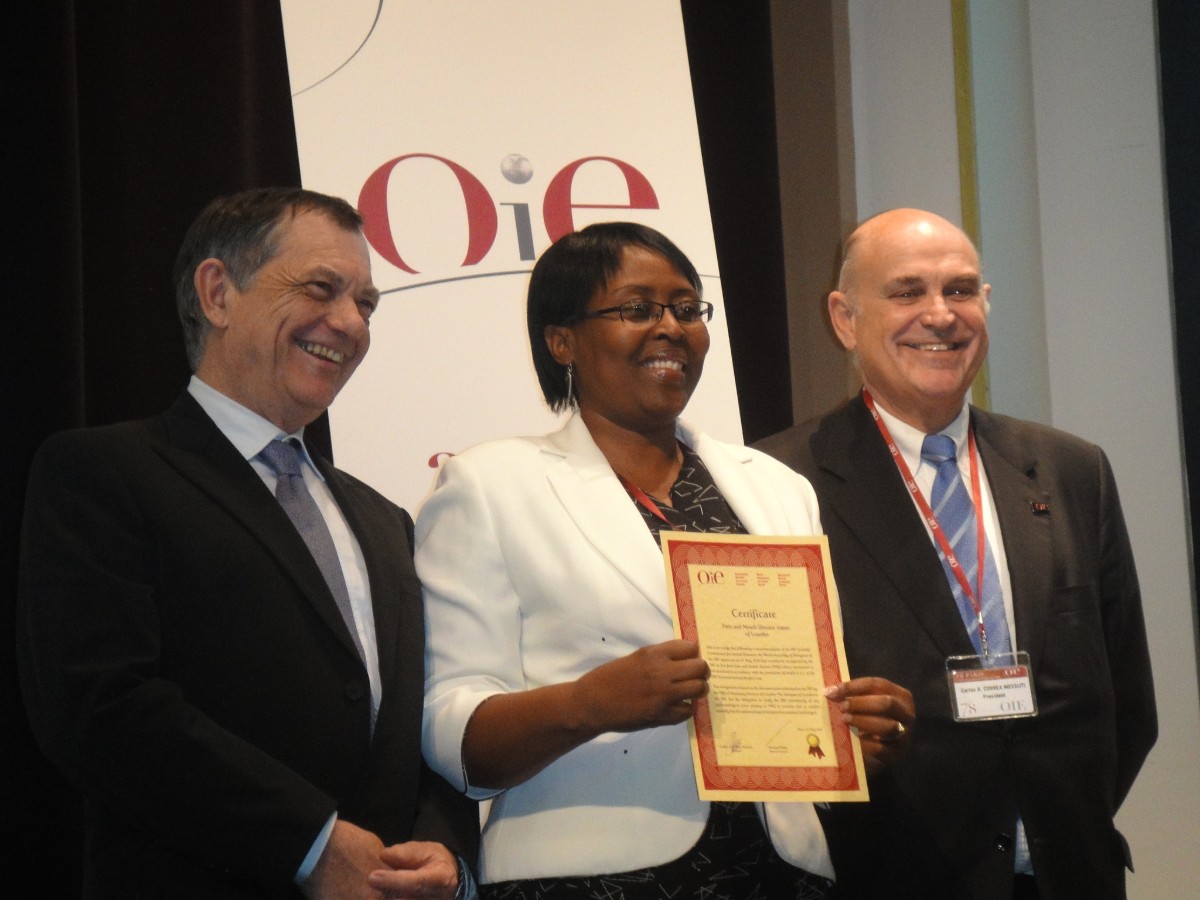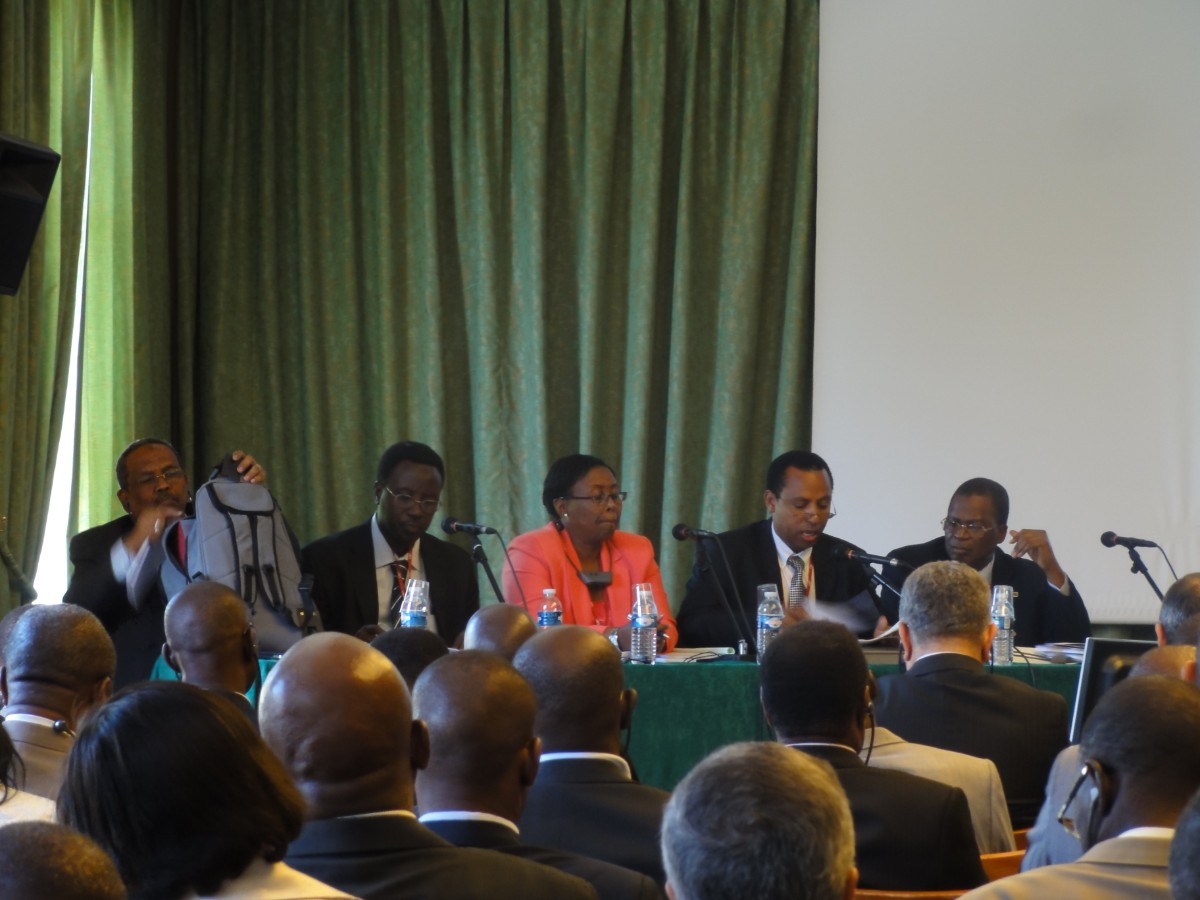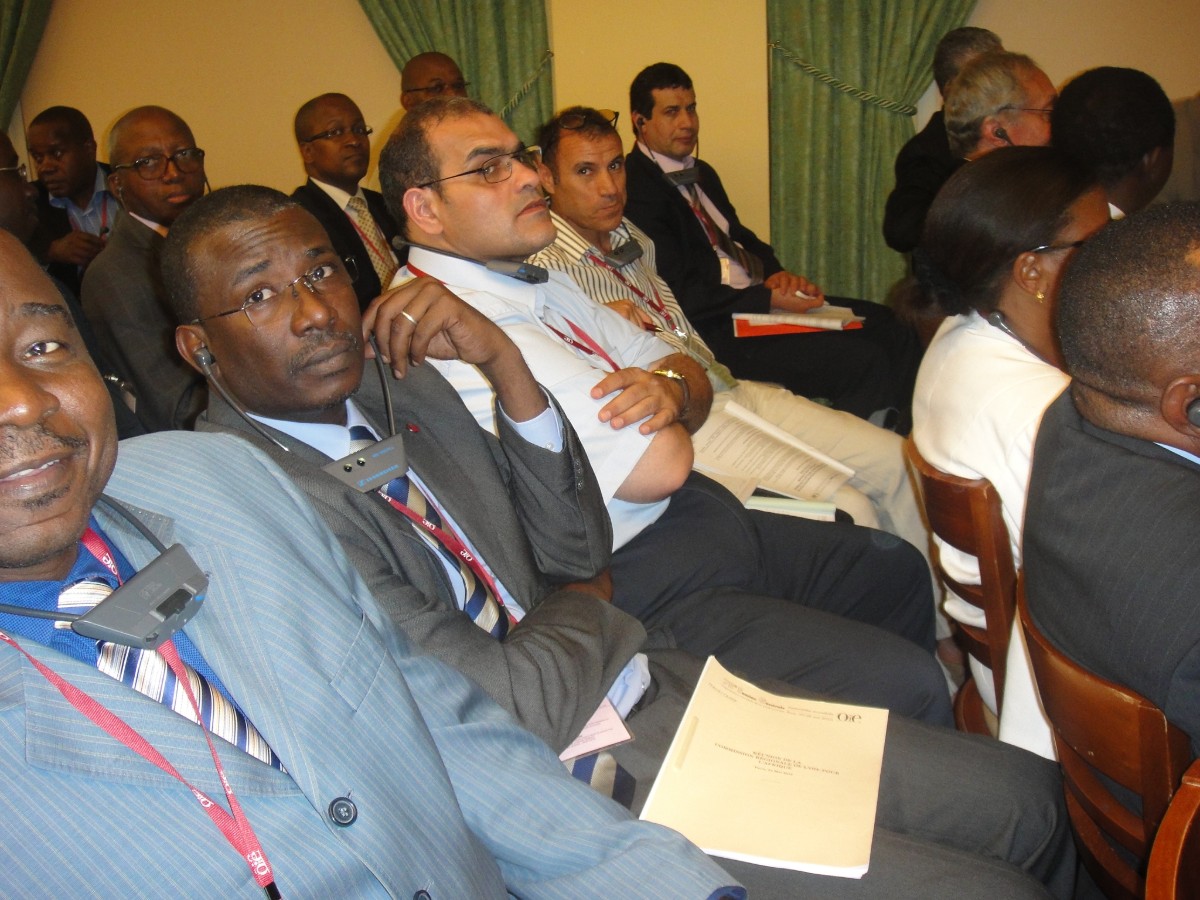
The just concluded 79th General Session of the OIE took place in the context of the 250th anniversary of the creation of the first veterinary school and the veterinary profession.
The OIE Members of Africa Region once again presented their positions with “one voice” on a variety of issues of interest to Africa.
H.E. The President of Paraguay, Mr Fernando Armindo Lugo Méndez was the guest of honour in the opening ceremony. The African guests of honour were Mr Mamadou Korka Diallo (Minister of Livestock of Guinea), Mr Ramootsi Lehata (Vice Minister of Agriculture and Food Security of Lesotho), Mr Barry E. Rafatrolaza, (Minister of Livestock of Madagascar), Mr Mahamane E. Ousmane (Minister of Livestock of Niger), Mr Benedict Ole Nangoro (Deputy Minister of Livestock and Fisheries Development of Tanzania) and Mr Mamadou Kané (Secretary General of the Ministry of Livestock and Fisheries of Mali).
Dr Stuart K. Hargreaves of Zimbabwe received (in absentia) a Meritorious Service Award for his outstanding service to veterinary science and to the OIE.
During the OIE Regional Commission for Africa meeting, on May 23rd, Mr Habib Ben Yahia, the Secretary General of the Arab Maghreb Union (AMU) addressed the commission. Dr Yacouba Samaké presented activities for the region and progress of the regional vision and activities regarding the 5th Strategic Plan in Africa and the Southern Africa Regional Animal Welfare Strategy initiative. Dr Berhe Gebreegziabher tendered his resignation as President and was commended for his sterling work. The new Bureau of the Regional Commission is as follows after elections were held:
The mandate however will be for another year.
Dr Yacouba Samaké on behalf of the OIE Director General, received an honorary certificate of registration from the Ghana Veterinary Statutory Body.
During the sessions of the World Assembly of Delegates, the following changes to the Aquatic Code were discussed and approved. The definition of “feed” in the glossary was retained. The new proposal for the modification of the definition of feed to clarify that it included living organisms such as Artemia in aquatic animal feed was not adopted. Reasons included inconsistency with TAHC and CAC definitions. Chapter 1.2 (Criteria for listing diseases) was adopted but with “negatively affect” defined for wild aquatic animals. Gyrodactylosis was changed to “Infection with Gyrodactylus salaris” for consistency.
As for the Aquatic Manual, the scope of Chapter 2.1.2. was amended to cover the major families of Anura and Caudata.
Certificates of official recognition of country freedom from rinderpest were awarded to Sierra Leone, Liberia (non OIE Member), Gambia, Sao Tomé and Principe and Comoros. It was during the same session that the report of the “Joint OIE/FAO Committee on Global Rinderpest Eradication” was presented by William Taylor which showed that the virus had ceased to circulate in animals. This was followed by the memorable Declaration of Global Eradication of Rinderpest.
The lessons learnt from rinderpest eradication were used to develop a strategy “towards global control and eradication of foot-and-mouth disease (FMD)”. The joint FAO/OIE Progressive Control Pathway tool for FMD was recommended to be used to monitor and assess the achievements of this global strategy and managed using the GF-TADs platform.
The costs to be covered by Members applying for the official recognition or reinstatement of a disease status (BSE, FMD, and CBPP) were discussed and the revisions adopted. A special case was made for the least developed countries.
Future activities of the Scientific Commission on Animal Diseases (SCAD) include convening an Ad hoc group to work on Rift Valley Fever, to request the Director-General to convene a working group on natural disasters and continued work on diseases of honeybees. The said Commission received a lot of comments on rabies from Members and these will be circulated for adoption in May 2012. The Peste des Petits Ruminants chapter is under review and the ad hoc group will meet in June especially with regards to the spread in Eastern Africa and the similarities with the global eradication of rinderpest.
The following changes to the Terrestrial Code were discussed and approved.
On disease specific chapters,
A new OIE Collaborating Centre for Epidemiology and Diagnosis of Emerging, Re-emerging and Transboundary Diseases of Animals in the Caribbean and in Central America (Cuba) was recognized, emphasizing its important experience in the area of biological disaster management. The Centre will be asked to add this subject matter as a collaborative activity for the OIE with the hope of a proposed new title submitted along with a revised application in 2012.
The Premi® Test Salmonella diagnostic kit manufactured by DSM Premitest was certified and registered by the OIE as fit for purpose for rapid confirmation and serotyping of 22 serotypes of Salmonella spp.
All pictures © D. Mordzinski (oie) 2011, unless mentioned otherwise


